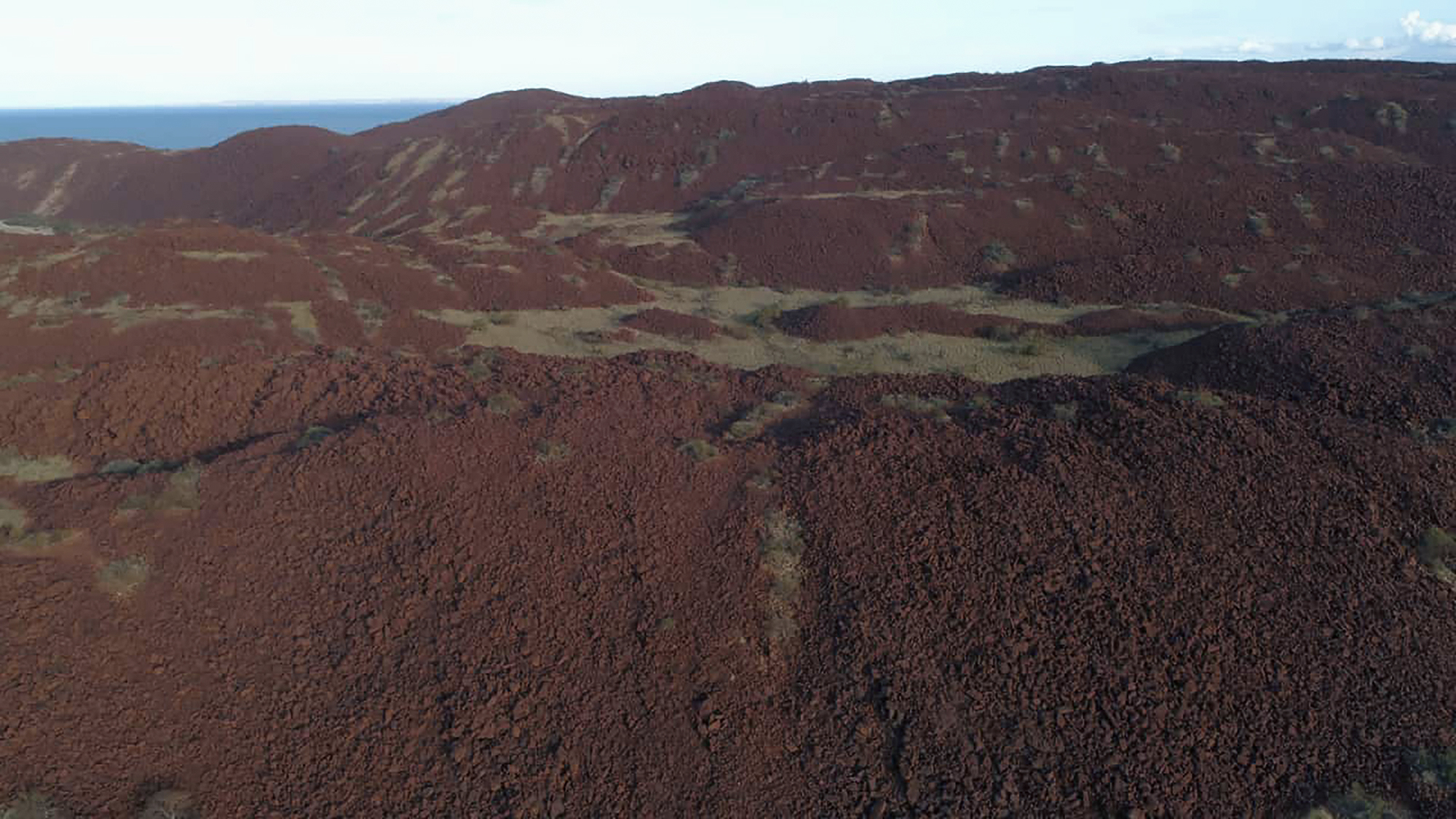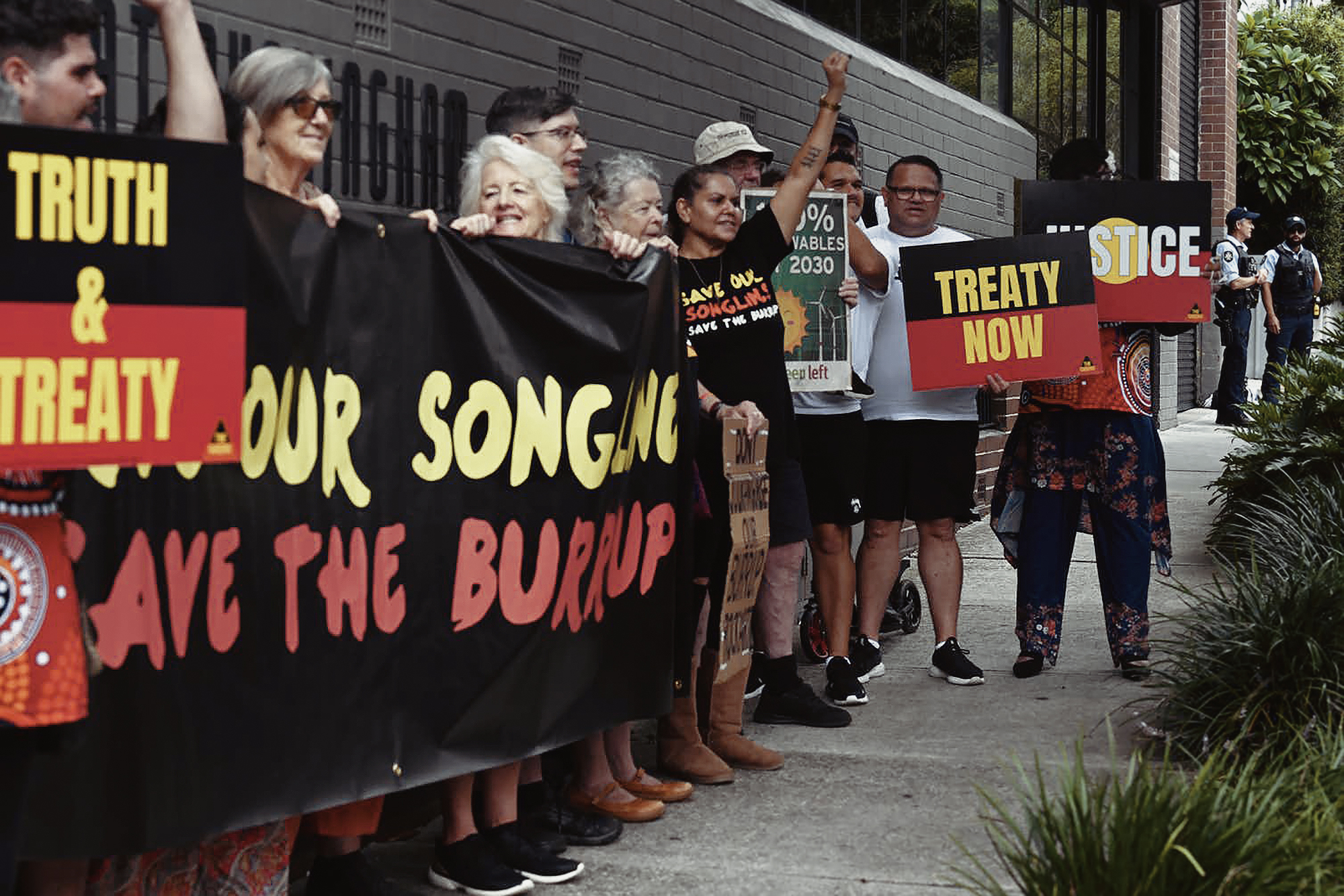
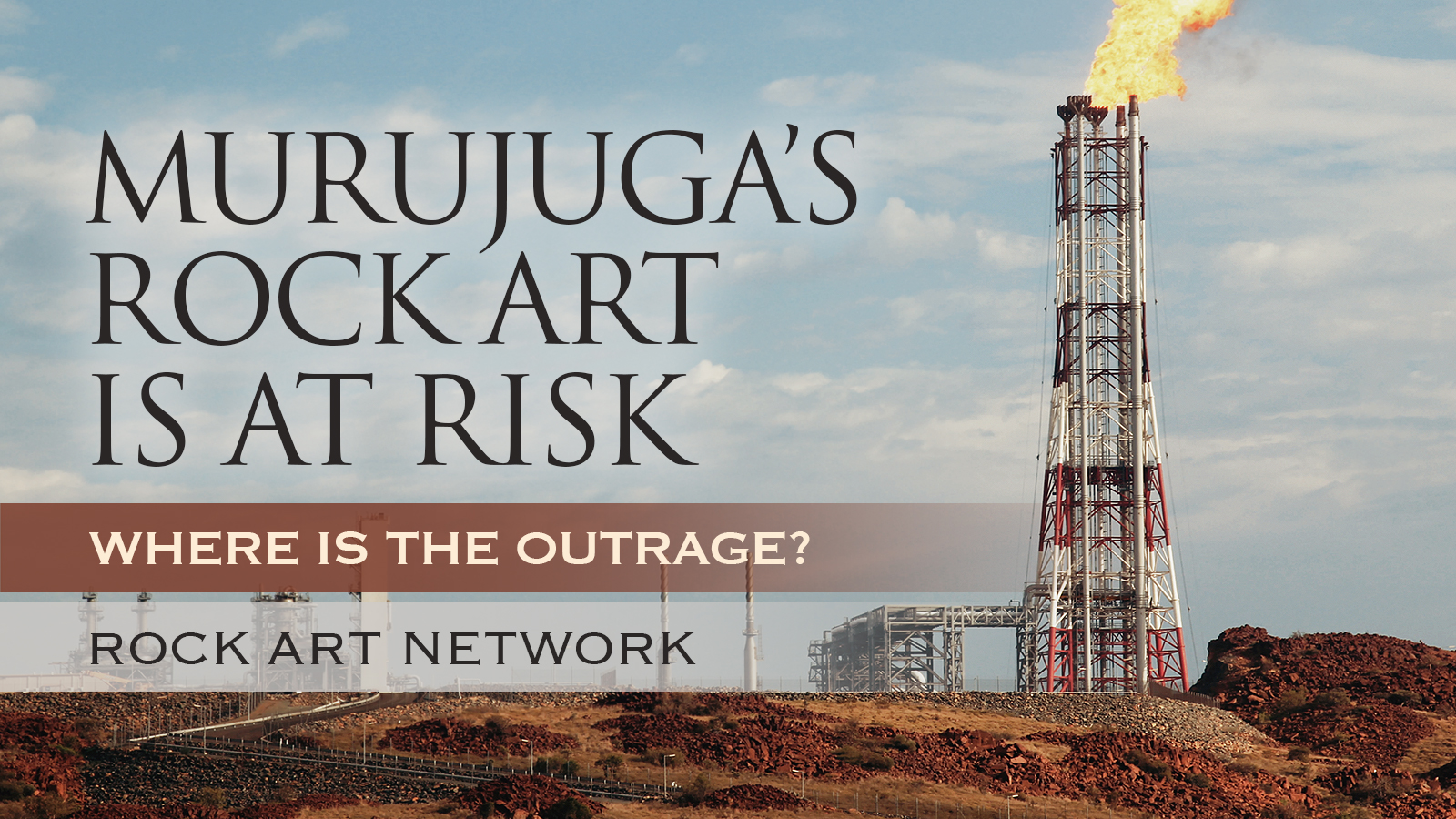
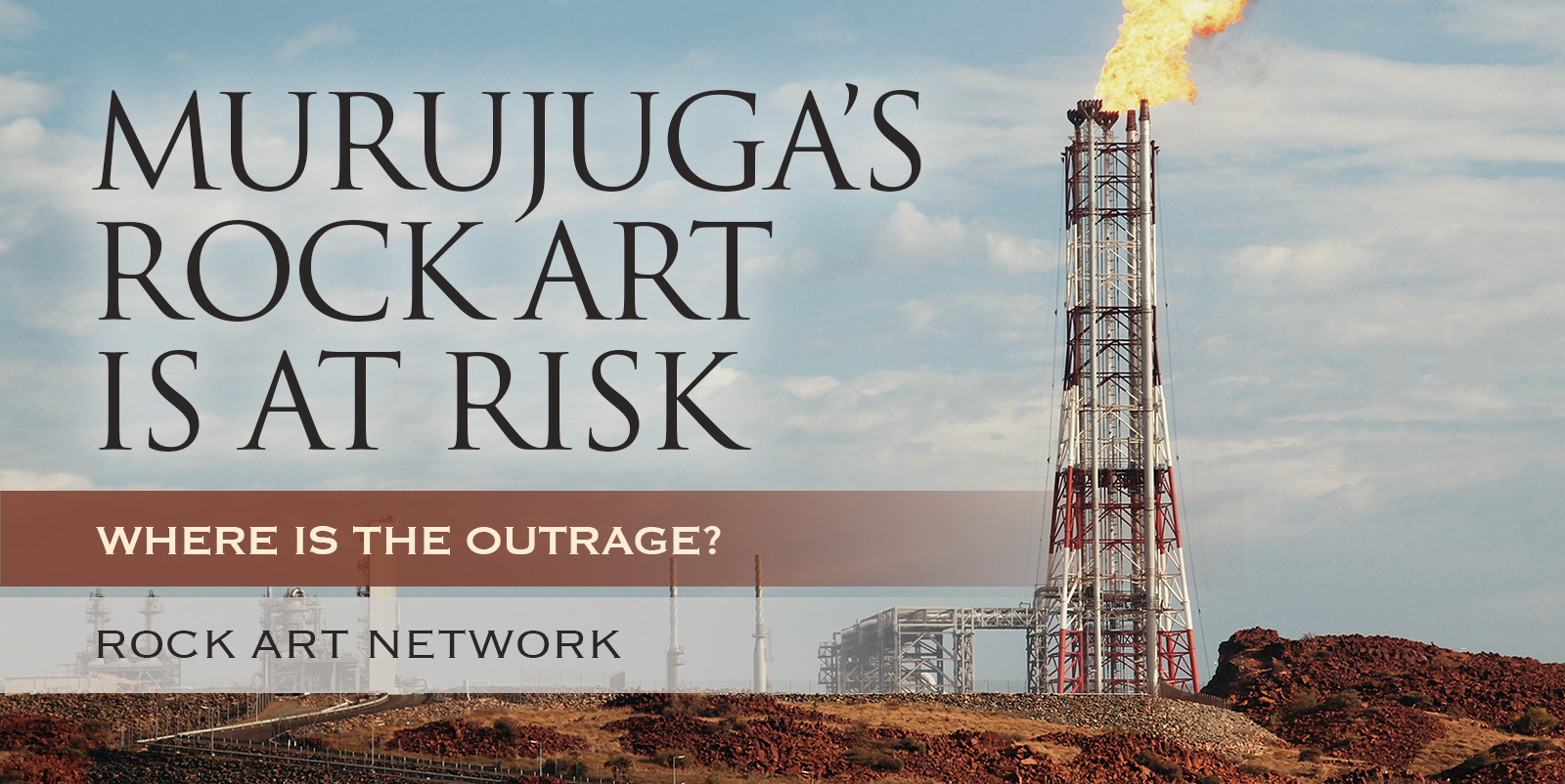
Moving Indigenous rock art anywhere in the world is controversial. In this case, a journalist photographing the removal was stopped by police. Later, her home was raided and her camera’s memory card temporarily seized.
The removal of rock art goes against international best practice in heritage conservation. Specifically, it breaches the globally accepted Burra Charter, which states that an object should “remain in its historical location” because this forms an important part of its cultural significance.
Despite the travesty unfolding at Murujuga/Burrup, non-Indigenous archaeologists have largely been silent about the destruction. As three rock art specialists with a combined professional experience of 100 years, we consider it our professional and moral obligation to speak out.
Murujuga/Burrup is 1,500 kilometres north of Perth. It contains more than a million rock art petroglyphs, making it the one of the world’s largest concentration of petroglyphs. The region’s art-making tradition may extend back more than 40,000 years.
The three rock art panels were removed this month. The panels will be relocated to another Burrup location.
Murujuga/Burrup is also home to several large gas and ammonia plants. Posing with a spade at the fertiliser factory site last month, WA Premier Mark McGowan said the project confirmed the Pilbara region’s role as the “engine room of Australia’s economy”.
The destruction has profoundly affected Traditional Owners. Raelene Cooper, Mardudhunera woman and the former chair of the Murujuga Aboriginal Corporation, this month said McGowan:
stands there quite proudly with a shovel to dig into the ngurra, the ground, giving the green light to go ahead and destroy the very rock art that holds the World Heritage values of our Country.
And following the rock art’s removal, Kuruma Marduthunera traditional custodian Josie Alec said:I don’t know what to say. I am so angry and hurt right now. It is a sad, sad state of affairs. The free, prior and informed consent has still not been given to Perdaman to remove these rocks – not all traditional custodians have been consulted on this.
Murujuga/Burrup is not the only place in WA suitable for a fertiliser factory. What’s more, acidic industrial emissions from facilities around the Burrup Peninsula are damaging the area’s rock art more generally. Emissions from the gas-powered fertiliser factory will exacerbate this – as well as leading to greater greenhouse gas emissions.
The damage to Indigenous heritage at Murujuga/Burrup has gained attention in recent years, and the problem was the subject of a 2016 Senate inquiry.
The destruction has also led to rising tensions, including street protests and road blocks, as Aboriginal community members struggle to make their voices heard.
These are not the first such protests. In the 1980s, the community and archaeologists protested against the Karratha Gas plant, a development that involved removing ancient Murujuga rock art panels. Many were damaged in the process.
In the 2000s, the proposed expansion of this plant, and plans to build a massive new liquefied natural gas facility, were met with even stronger protests. Archaeologists from across the world vocally opposed the plans.
Today, Aboriginal voices against cultural heritage damage at Murujuga/Burrup are louder than ever.
But archaeologists have largely remained silent about the destruction.
Expert voices are crucial when it comes to standing up to government and corporate power. Take, for example, the almost 100 scientists who this month demanded the Northern Territory government abandon fracking in the Beetaloo Basin.
We urge archaeologists around the world to follow this example. They should demand a stop to all industrial development at Murujuga, and the immediate return of the three rock art panels.
In Australia, the cultural violence of rock art removal is being recognised in some quarters. For example, three Tasmanian museums and galleries recently returned rock art panels to locations from which they were removed in the 1960s.
Damage to rock art is not just an affront to Aboriginal people. It diminishes us all. As the global advocacy group the Rock Art Network says:
This fragile and irreplaceable visual heritage has worldwide significance, contemporary relevance and for many indigenous peoples is still part of their living culture. If we neglect, destroy or disrespect rock art we devalue our future.
→ Members and affiliated institutions of the Rock Art Network
by
George Nash
5/09/2024 Recent Articles
→ Sigubudu: Paintings of people with guns in the northern uKhahlamba-Drakensberg
by Aron Mazel
22/07/2024
by Richard Kuba
13/06/2024
by Meenakshi Dubey-Pathak
8/03/2024
by Rock Art Network
6/02/2024
by Rock Art Network
14/12/2023
by Sam Challis
5/12/2023
by Aron Mazel
30/11/2023
by Sam Challis
21/11/2023
by Sam Challis
15/11/2023
by Sam Challis
10/11/2023
by Rock Art Network
6/11/2023
by Rock Art Network
3/11/2023
by Aron Mazel
2/11/2023
by Meenakshi Dubey-Pathak
26/09/2023
by Paul Taçon
24/08/2023
by Aron Mazel
13/06/2023
by Paul Taçon
5/06/2023
by Paul Taçon
15/03/2023
by George Nash
14/03/2023
by Noel Hidalgo Tan
10/02/2023
by George Nash
01/02/2023
by Meenakshi Dubey-Pathak, Pilar Fatás Monforte
29/11/2022
by Aron Mazel, George Nash
21/09/2022
by Paul S.C. Taçon, Sally K. May, Ursula K. Frederick, Jo McDonald
07/07/2022
by Meenakshi Dubey-Pathak
26/07/2022
by Paul Taçon
20/07/2022
by David Coulson
16 June 2022
by Paul Taçon
25 April 2022
by Noel Hidalgo Tan
20 April 2022
by Meenakshi Dubey-Pathak
14 March 2022
by Carolyn Boyd & Pilar Fatás
02 March 2022
by David Coulson
07 February 2022
by Johannes H. N. Loubser
06 February 2022
by Meenakshi Dubey-Pathak
05 February 2022
by Aron Mazel
28 January 2022
by Aron Mazel
8 September 2021
by David Coulson
17 August 2021
by Ffion Reynolds
21 June 2021

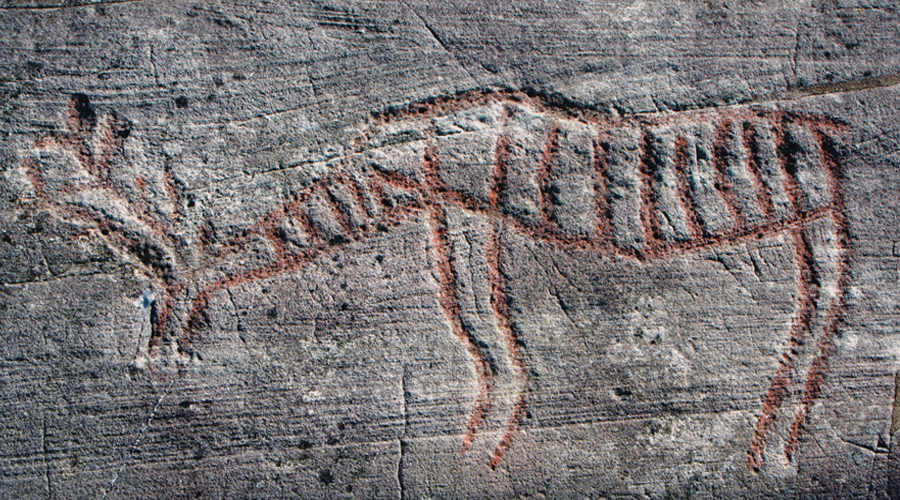
by Aron Mazel
22/07/2024
by Richard Kuba
13/06/2024
by Meenakshi Dubey-Pathak
8/03/2024
by Rock Art Network
6/02/2024
by Rock Art Network
14/12/2023
by Sam Challis
5/12/2023
by Aron Mazel
30/11/2023
by Sam Challis
21/11/2023
by Sam Challis
15/11/2023
by Sam Challis
10/11/2023
by Rock Art Network
6/11/2023
by Rock Art Network
3/11/2023
by Aron Mazel
2/11/2023
by Meenakshi Dubey-Pathak
26/09/2023
by Paul Taçon
24/08/2023
by Aron Mazel
13/06/2023
by Paul Taçon
5/06/2023
by Paul Taçon
15/03/2023
by George Nash
14/03/2023
by Noel Hidalgo Tan
10/02/2023
by George Nash
01/02/2023
by Meenakshi Dubey-Pathak, Pilar Fatás Monforte
29/11/2022
by Aron Mazel, George Nash
21/09/2022
by Paul S.C. Taçon, Sally K. May, Ursula K. Frederick, Jo McDonald
07/07/2022
by Meenakshi Dubey-Pathak
26/07/2022
by Paul Taçon
20/07/2022
by David Coulson
16 June 2022
by Paul Taçon
25 April 2022
by Noel Hidalgo Tan
20 April 2022
by Meenakshi Dubey-Pathak
14 March 2022
by Carolyn Boyd & Pilar Fatás
02 March 2022
by David Coulson
07 February 2022
by Johannes H. N. Loubser
06 February 2022
by Meenakshi Dubey-Pathak
05 February 2022
by Aron Mazel
28 January 2022
by Aron Mazel
8 September 2021
by David Coulson
17 August 2021
by Ffion Reynolds
21 June 2021
Friend of the Foundation


by Aron Mazel
22/07/2024
by Richard Kuba
13/06/2024
by Meenakshi Dubey-Pathak
8/03/2024
by Rock Art Network
6/02/2024
by Rock Art Network
14/12/2023
by Sam Challis
5/12/2023
by Aron Mazel
30/11/2023
by Sam Challis
21/11/2023
by Sam Challis
15/11/2023
by Sam Challis
10/11/2023
by Rock Art Network
6/11/2023
by Rock Art Network
3/11/2023
by Aron Mazel
2/11/2023
by Meenakshi Dubey-Pathak
26/09/2023
by Paul Taçon
24/08/2023
by Aron Mazel
13/06/2023
by Paul Taçon
5/06/2023
by Paul Taçon
15/03/2023
by George Nash
14/03/2023
by Noel Hidalgo Tan
10/02/2023
by George Nash
01/02/2023
by Meenakshi Dubey-Pathak, Pilar Fatás Monforte
29/11/2022
by Aron Mazel, George Nash
21/09/2022
by Paul S.C. Taçon, Sally K. May, Ursula K. Frederick, Jo McDonald
07/07/2022
by Meenakshi Dubey-Pathak
26/07/2022
by Paul Taçon
20/07/2022
by David Coulson
16 June 2022
by Paul Taçon
25 April 2022
by Noel Hidalgo Tan
20 April 2022
by Meenakshi Dubey-Pathak
14 March 2022
by Carolyn Boyd & Pilar Fatás
02 March 2022
by David Coulson
07 February 2022
by Johannes H. N. Loubser
06 February 2022
by Meenakshi Dubey-Pathak
05 February 2022
by Aron Mazel
28 January 2022
by Aron Mazel
8 September 2021
by David Coulson
17 August 2021
by Ffion Reynolds
21 June 2021
Friend of the Foundation
